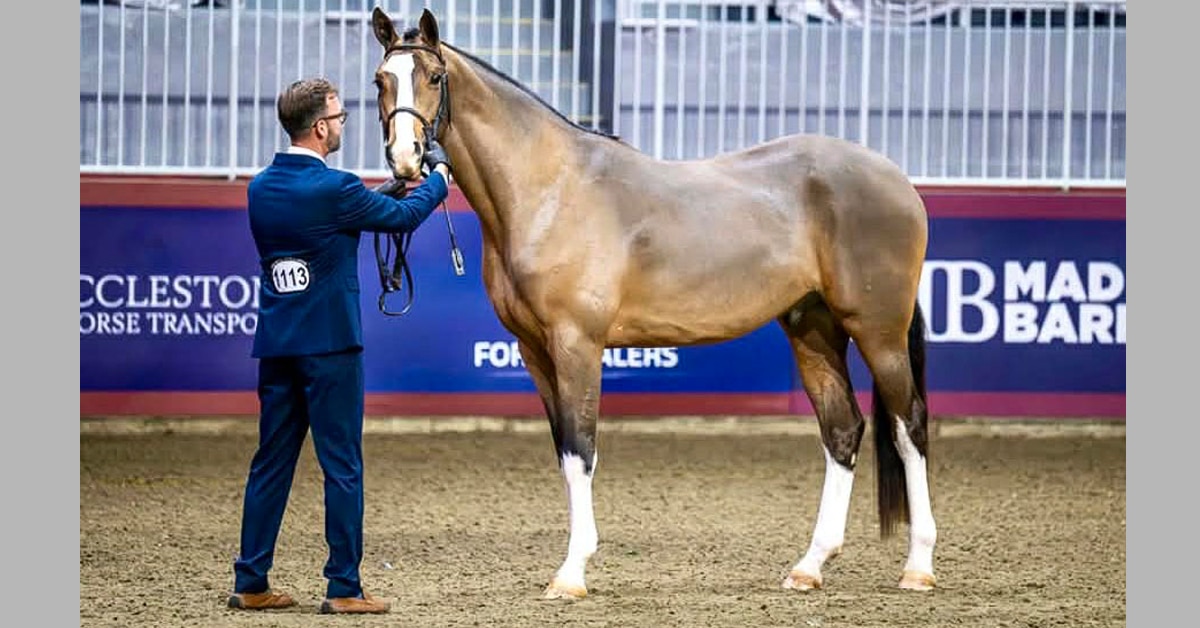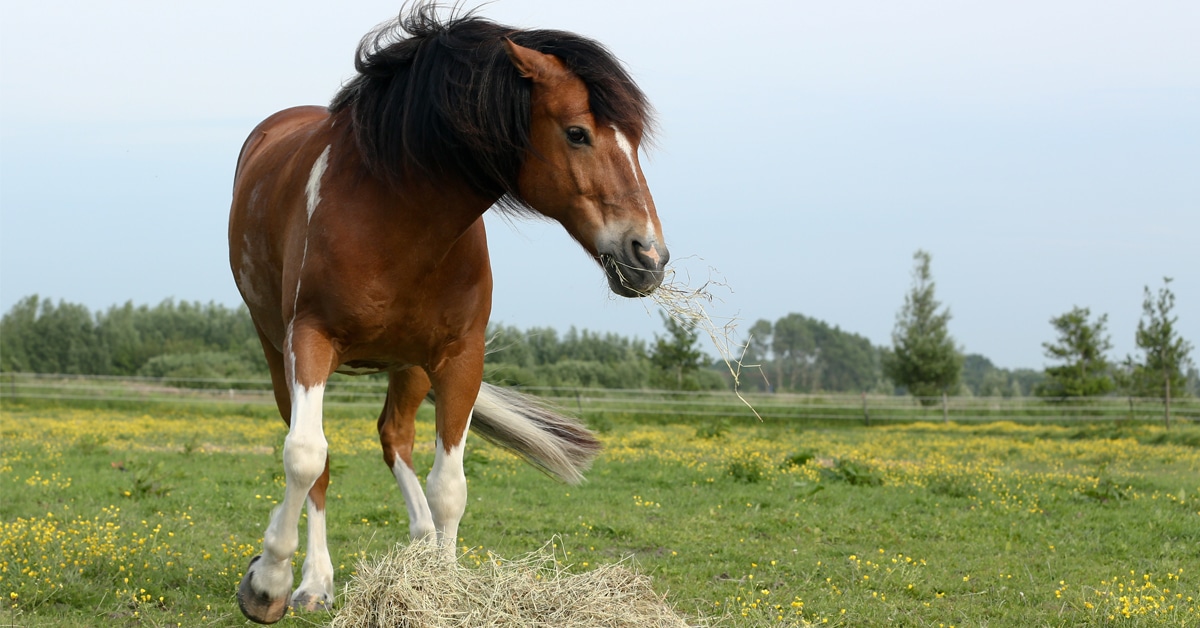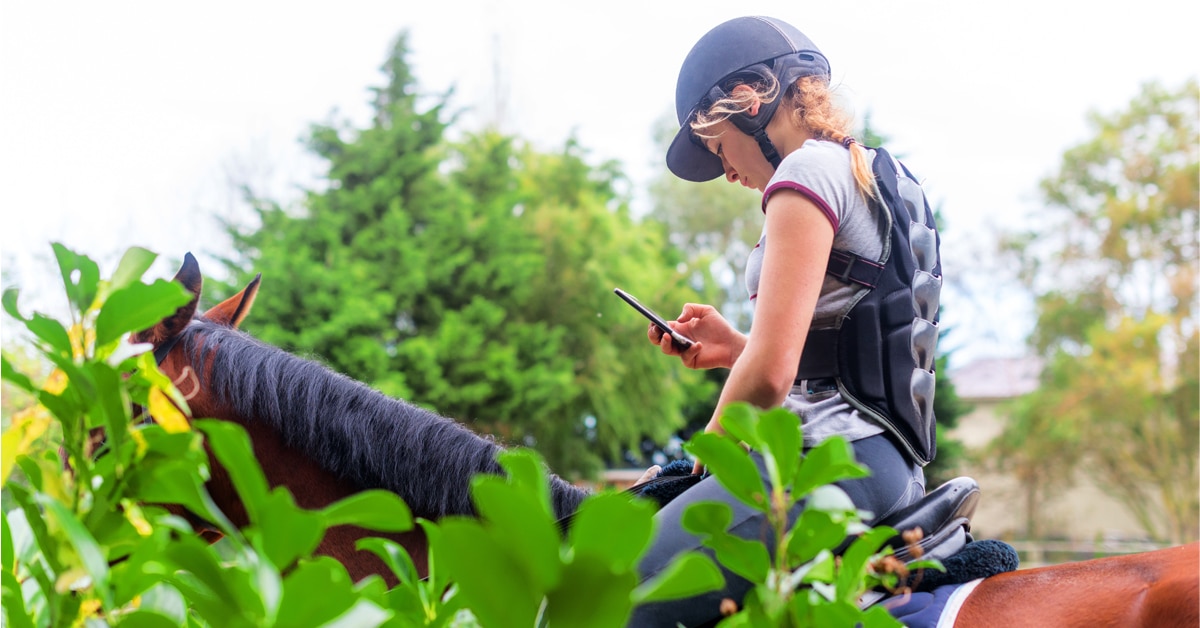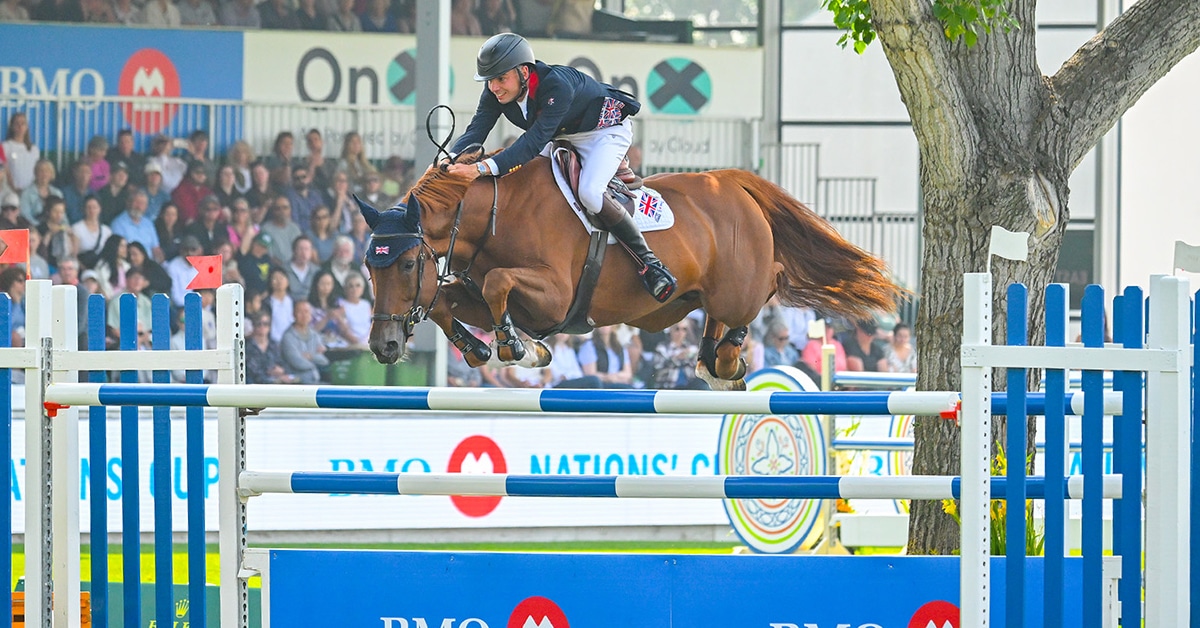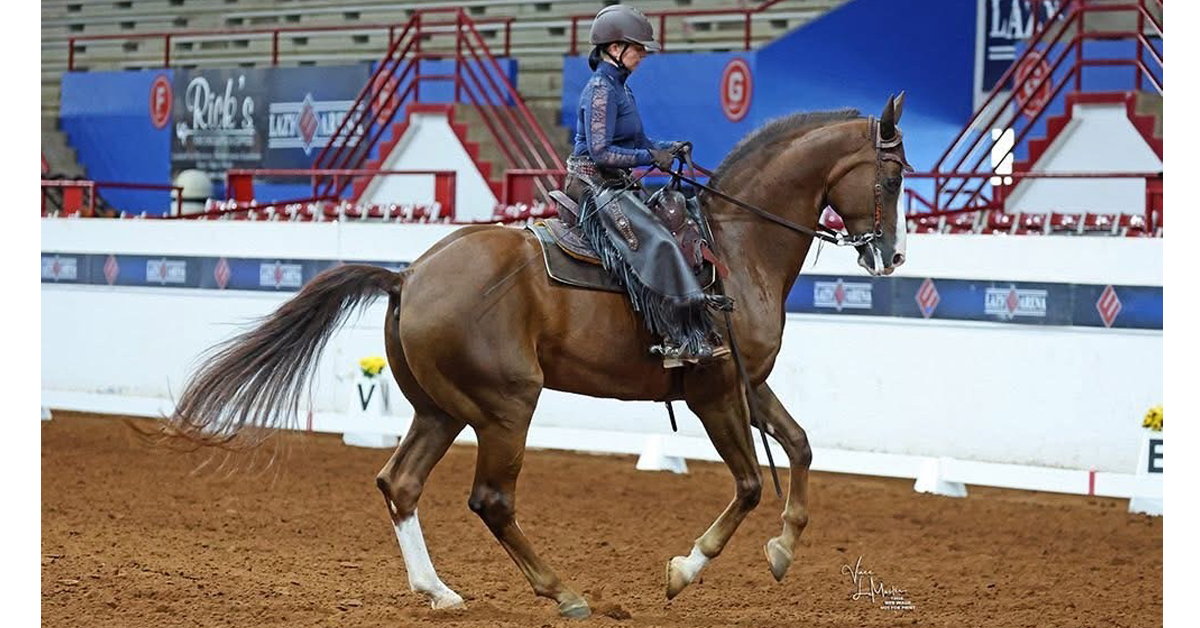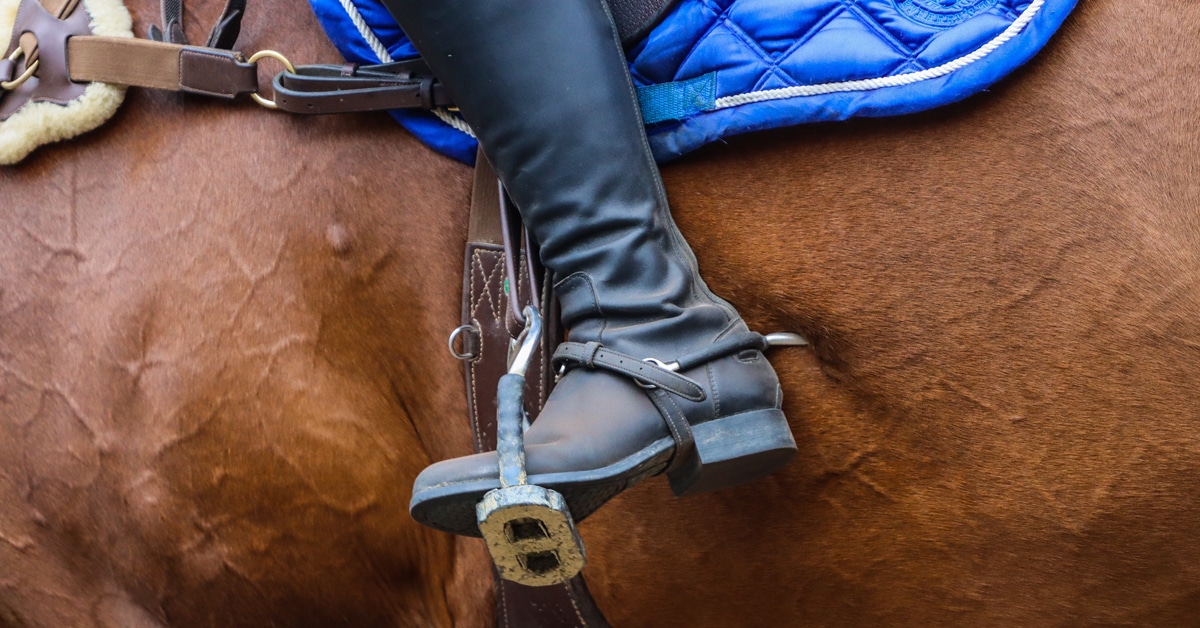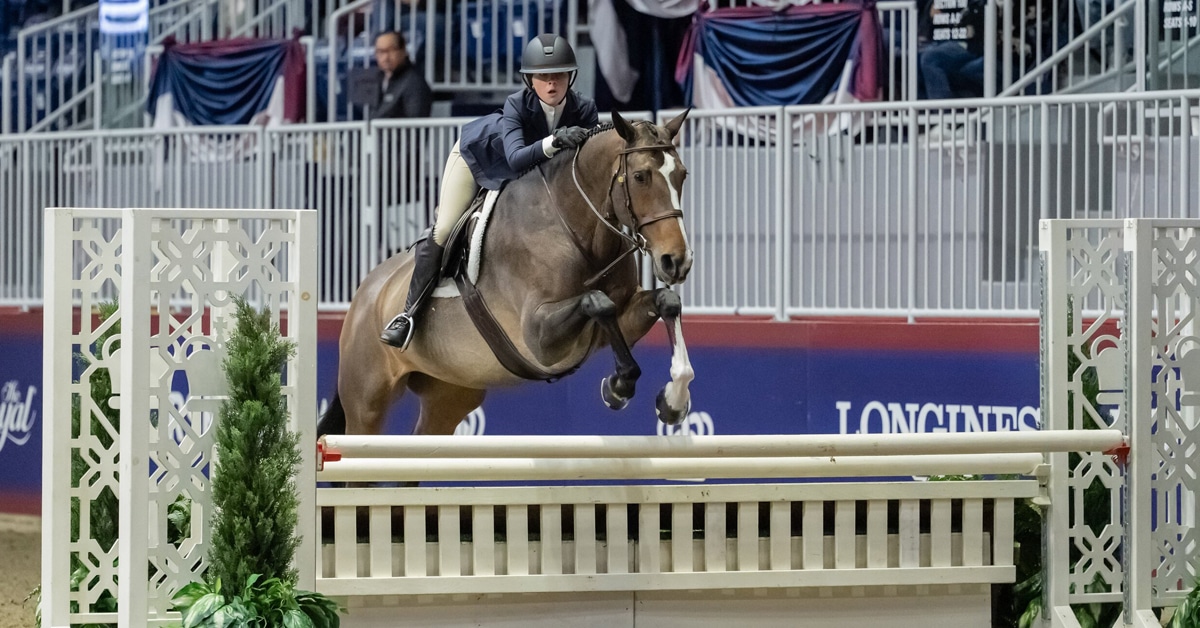You approach your horse’s stall or paddock only to be greeted by flattened ears, flared nostrils, and a swishing tail, even threats to charge, bite, or kick you or nearby horses. This aggressive body language is clearly threatening harm to anyone who comes into your horse’s space. If this scene sounds familiar, it’s time for a change.
Anyone who handles your horse should be able to safely enter his stall or paddock at any time without fear. Even when he is eating, or you are bringing him food or water, you should be able to go into his stall and move him away from his meal without being threatened. Your horse should display passive body language and easily move out of your way when asked. In this article, we will look at why some horses become aggressive about their food, and what you can do to improve a pushy horse’s table manners.
Learned Behaviour
Aggression over food is a learned behaviour in domestic horses. In their natural setting in the wild, there is very little competition or aggression between feral horses, because they live in social family groups. Generally, aggression is only displayed when:
• A mare keeps other horses away from her new foal
• A youngster oversteps boundaries by barging into an older horse’s space
• A new mare arrives in the herd
• The herd becomes too large
• A stallion defends his herd from a competitor
Wild horses rarely become aggressive about food, even if it is scarce. Since space is virtually unlimited, the herd just moves on to find more food or water. They graze for at least 16 hours each day and, depending on the availability of food and water, will walk many kilometres as they do so.
The lives of domesticated horses are very different. They generally live in situations where space, food, and water are limited resources. Their pasture mates are chosen for them, and groups often change. These living arrangements make their eating habits very different from their wild cousins. They may receive food only at specific times every day, quickly eating up their ration in an hour or two, which leaves several hours to stand around waiting for their next meal. This cycle creates anxiety and competition over food, and aggressive behaviour becomes the conditioned response at feeding time.
If your horse is stressed or very hungry, his anxiety will increase as feeding time approaches or he sees you coming with his food. He may initially communicate his anxiety with subtle whispers of body language like a muscle twitch, which can be difficult to notice. This tension can then quickly change into more obvious behaviours like pacing, weaving, pawing, or banging his stall door.
As his anxiety builds, so does the aggressiveness of his body language, escalating to displays which are much easier to read. Ear-pinning, charging, and threats of biting or kicking are very clearly telling anyone nearby to get out and stay out of his way immediately.
Peace in the paddock
In the paddock, horses can be aggressive at feeding time, around the water trough, or when someone comes to catch up their horse. Reduce competition and stress in the paddock by ensuring:
• there is adequate space for the number of horses in the group (the general rule of thumb is two acres per horse)
• food and water are available in areas where a horse cannot get trapped/cornered by another horse
• there is adequate food and water available at all times for all the horses
• food is spread out in several areas, not just one or two in which multiple horses have to compete
Slow feeder nets and devices effectively decrease wastage and slow down the rate at which horses consume their hay. As they eat at a more natural grazing pace, the length of time the horses have no food available is significantly reduced.
Safe in the stall
As flight animals, horses are naturally claustrophobic and the herd hierarchy continues to affect them even through the stall walls. One way of reducing tension is to know the hierarchy of the herd, and not put horses who don’t get along next to each other.
In order to change your horse’s behaviour, make sure you recognize the signs of threatening and passive body language:
For your horse to consistently show you passive body language in every interaction with him, you must be consistent in your behaviour – as well as your expectations of his behaviour towards you. It’s not necessary to have specific training sessions for this to happen; you are training a horse every time you are with him. He always reads your body language and intention (i.e. passive, assertive, aggressive, fearful, etc.).
Changing your horse’s aggressive behaviour is possible, but, as with all good training, it takes some time and effort on your part. If your horse is inclined to run over you or threatens your physical safety in any way, get help from an experienced professional.
The following exercise will help you to:
• consistently define your personal space
• ensure your horse moves back out of your space any and every time he crosses your boundary
• move your horse’s hips and shoulders away from you
• change your horse’s bend so that he bends around you
• recognize and reward passive body language
You can do this exercise with your horse either in his paddock or in his stall. Do not practice in the paddock if other horses are going to interfere or be a threat to you or your horse’s safety. Initially, it is best to practice at a non-feeding time, and keep these points in mind:
• always have an escape route in case aggression escalates
• work near the gate of the paddock or at the open door of his stall
• use a lunge or dressage whip to extend your reach and keep the horse a safe distance away from you
• only bring the whip from the ground up towards the horse, the point of the whip as high as the horse’s mid-line, and never direct the “push” at his head
Remember that horses are experts at reading our body posture and tension. Always approach your horse by moving assertively, but not aggressively, towards his shoulder. Avoid sending any pushing energy towards his head or neck, as this is offensive to him. When your horse is passive, ensure that your body language is also passive.
Establishing personal space
Picture a large bubble around you that defines your personal space and is at least the length of your whip. Your horse is not allowed to cross the outer boundary of this bubble. If your horse moves into your space with aggressive body language, push him away by firmly moving the whip towards the part of his body that is coming towards you – his chest, shoulder or hips. If he still continues to move towards you, the last resort is to give him a “bite” with the whip on the appropriate body part. If he moves away, but turns his hindquarters towards you or kicks out, give a strong push or ‘nip’ to his hips. You are looking for the horse to move out of your space without threatening you or pushing into you.
When your horse is showing passive body language and staying out of your space, introduce some food in a bucket. Use some grain or his favourite treat. If your horse shows even the slightest sign of pushiness or aggression, send him away from the bucket. When he shows passive body language, move away from the bucket and allow him to eat a bit.
It is natural for a leader to be able to push another horse off food. Ask your horse to leave the food by moving towards his shoulder with appropriate body language, sending his shoulder away while blocking his head from coming in. Pay attention to how he leaves. Respond to aggressive behaviour by assertively and firmly pushing away the offending body part. Reward his passive behaviour by retreating and allowing him to come back to the food.
Recognize that equine aggression is a form of communication used to protect a horse that feels threatened or frustrated in some way. You will improve your relationship with your horse when you are consistent with your own behaviour, aware of your own and your horse’s body language, and apply herd dynamics to all of your interactions with your horse. Feeding time will be stress-free and safe for both of you.
The Latest
